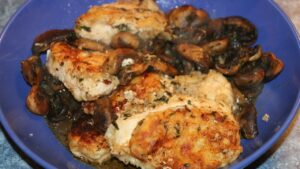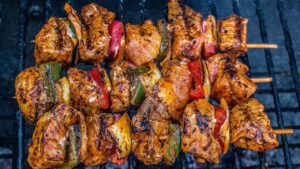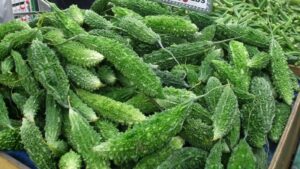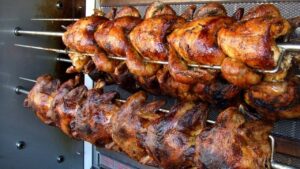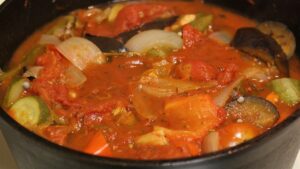What is Frying?
Frying is a cooking technique that involves submerging food in hot oil at temperatures between 350 and 375ºF. This thermal process results in a crisp exterior and a moist interior, with the food turning golden brown.
Frying can be used in both industrial and residential settings, and is popular worldwide due to its ability to create appetizing, texturally pleasing food.
Key Takeaways
- Frying is a dry heat process done within a temperature of350 and 375ºF
- Frying started in the 5thCentury BC and is a popular concept of cooking.
- One must have the right equipment & perfect oil medium to fry the food
- Safety procedures should be taken while frying in deep frying technique.
Understanding Frying
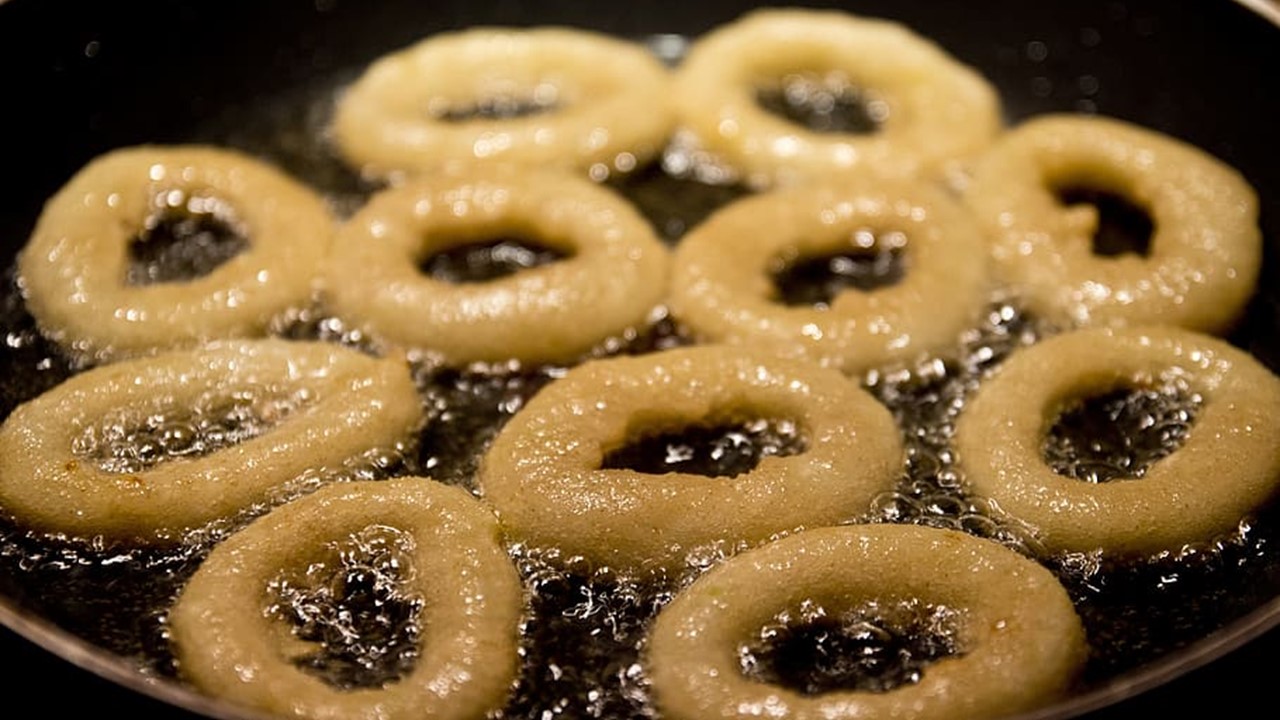
Frying has a rich history that dates back to the 5th century BC, where it was originally used as a preservation method.
The invention of frying pans during the Mesopotamian civilization led to the creation of different fried food items.
In his book “Fried Food in the Greek World,” Giuseppe Pucci highlights how fried foods represent Hellenic culture.
Over time, deep-fried food became popular in modern-day Spain, Portugal, and the Middle East, where falafel and chickpea batter became popular dishes.
In Japan, fried fish and tempura were introduced in the 16th and 19th centuries, respectively. French fries or fried potatoes also became a world-famous dish in the 1700s.
Today, the process of frying has evolved to make dishes more appealing to the senses. New techniques, such as open pot fryers and air fryers, have been invented to reduce oil absorption while maintaining food quality.
Fried dishes remain popular across all levels of society and are enjoyed worldwide.
Importance of Frying
Quick Cooking: The high heat of oil makes the frying process faster than other cooking methods.
Enhanced Taste: Fried food has a distinct and desirable taste due to its crispy texture.
Tender Food: Deep-frying can make food tender on the inside and crusty on the outside, especially for non-veg items like meat and fish.
Better Appearance: Frying enhances the appearance of food as the crust turns golden brown, and the inside remains juicy.
Sealed Moisture: Moisture is sealed within the food during frying, making it tender and juicy on the inside.
Frying saves time and energy and is an easy cooking method.
Types of Frying
There are several types of frying, each with its unique characteristics and cooking techniques. These include:
This is a simple frying process that involves cooking food with minimal fat, often by tossing or flipping it. Sautéing enhances the flavors of the ingredients and is commonly used for cooking tender veggies, meat, and fish on a skillet, wok, or pan.
Stir-fry:
This Chinese cooking technique involves quick, easy, and efficient cooking. A pan or wok is used to stir-fry food, and it is particularly well-suited for making noodles.
Triple Cook Frying:
This is a method of frying food three times, resulting in food that is evenly cooked and crispy on the outside. This technique is commonly used to make perfectly cooked chips.
Deep Frying:
Deep frying involves cooking food in a large amount of oil, fully submerging it. This method cooks the food evenly, resulting in a crispy exterior and a fully cooked interior. It is used for food with a thick coating, such as fried chicken, fritters, and other delicacies.
Shallow Frying:
This technique involves cooking food in a small amount of oil, using high heat. It is used for cooking fish, vegetables, meats, patties, and other items. The pan needs to be hot before adding the food to ensure that it cooks evenly.
Tips for Perfect Frying
Frying is a delicate process that requires attention and care. To ensure your fried dishes turn out perfectly, follow these helpful tips:
Choose the right oil: Select an oil that matches the recipe, food, and frying method you’re using. Different oils have different heating temperatures, so be sure to choose the right one.
Use the proper equipment: The right equipment is essential to the frying process. Choose utensils and tools that match the recipe, heat transfer, and fat content, whether you’re frying shallow, deep, or stir-frying.
Mix the batter well: Make sure your batter is well mixed with the right seasonings and other ingredients. A perfectly seasoned crust ensures a tasty and evenly fried dish.
Be safe: When frying with a large amount of oil, maintain a safe distance and use safety equipment such as a digital thermometer to ensure the temperature is correct.
Hold before releasing: Hold fried items for a few seconds after frying to let excess oil drip off before transferring them to a container.
Remove excess oil: Use a tissue or paper towel to remove excess oil from fried items to ensure they’re not too greasy.
Don’t overfill the pan: Overfilling the pan will cause the food to clump together and not fry evenly, resulting in a soggy dish.
Uses of Frying in Indian Cuisine
Frying is an essential part of Indian cuisine, and it is used in many dishes to add flavor, texture, and color. From street food to festive meals, frying plays a significant role in Indian culinary traditions.
One of the most popular uses of frying in Indian cuisine is for making fritters, also known as pakoras or bhajiyas.
These are made by coating vegetables or meat with a spiced batter and deep-frying until golden and crispy. Some popular fritters include onion bhajiyas, potato fritters, and paneer pakoras.
These are often served as snacks or appetizers and are enjoyed with chutneys or sauces.
Another popular use of frying in Indian cuisine is for making samosas.
These are triangular-shaped pastry pockets filled with spiced potatoes, peas, or meat, which are then deep-fried until crispy.
Samosas are a popular street food in India and are often served as a snack or as part of a meal.
Frying is also used for making various types of bread in Indian cuisine. For example, puris are small, round, deep-fried bread made from wheat flour, and they are often served with curries or chutneys.
Similarly, bhaturas are a type of deep-fried bread made from fermented dough, and they are often served with chickpea curry.
Frying is also used for making crispy snacks such as papadums, which are thin, crisp discs made from lentil or rice flour. These are often served as a side dish or snack and are enjoyed with chutneys or pickles.
In addition to these dishes, frying is also used in various curries and gravies to add flavor and texture.
For example, many Indian curries call for spices to be fried in oil before adding other ingredients. This process is called “tempering” and is used to release the flavors of the spices and infuse them into the dish.
So I can say frying plays a significant role in Indian cuisine, and it is used in a variety of dishes, from street food to festive meals.
Whether it’s for making fritters, samosas, or crispy snacks, or for adding flavor and texture to curries and gravies, frying is an essential part of Indian culinary traditions.
Questions & Answers:
What is the Frying Temperature?
To be honest different types of items or food are from different temperatures but if you want to conclude then the 350 and 375ºF range will be good as a standard frying temperature.
What Type of Heat Method is Frying?
Frying is a dry heat method. Here the heat is transferred by a greasy medium to cook the food with a crispy outside and tender inside. This is being applied to different types of food.
Does Frying Remove Moisture?
Yes, frying can remove moisture from food. When food is fried, the high heat causes the moisture inside the food to evaporate and escape.
This results in a crispy outer layer, but the inside of the food can become dry. The amount of moisture lost during frying can vary depending on factors such as the type of food, the temperature of the oil, and the duration of frying.
In general, foods that are fried for a shorter duration and at lower temperatures tend to retain more moisture than those that are fried for longer periods or at higher temperatures.
Conclusion
Finally, frying is a popular cooking technique that involves submerging food in hot oil at temperatures between 350 and 375ºF.
It has a rich history and has evolved over time, with new techniques like open pot fryers and air fryers being invented.
Frying has several benefits, including the creation of a crispy crust, improved taste, tender food, better appearance, and sealed moisture.
There are different types of frying, including sautéing, stir-fry, triple cook frying, deep frying, and shallow frying, each with unique characteristics and cooking techniques.

